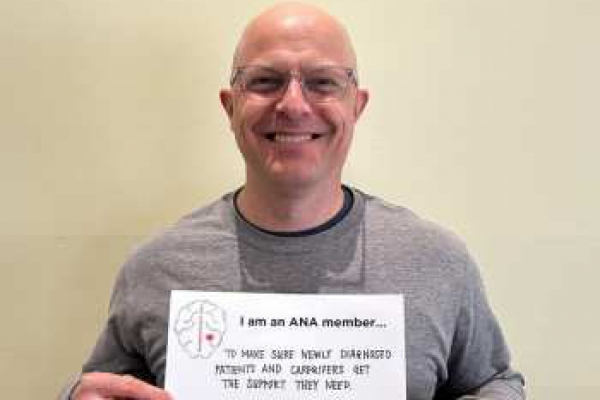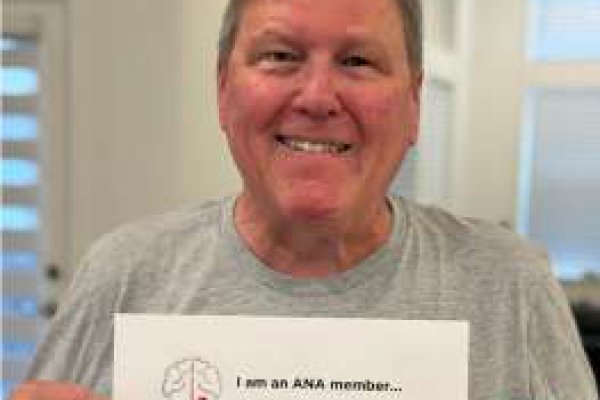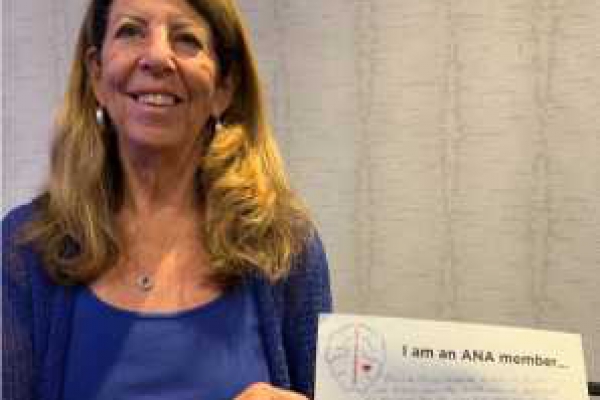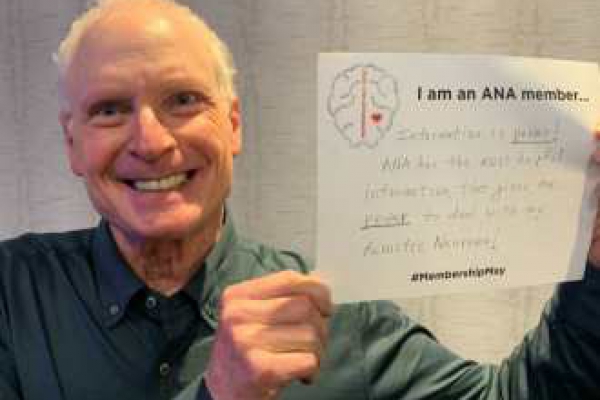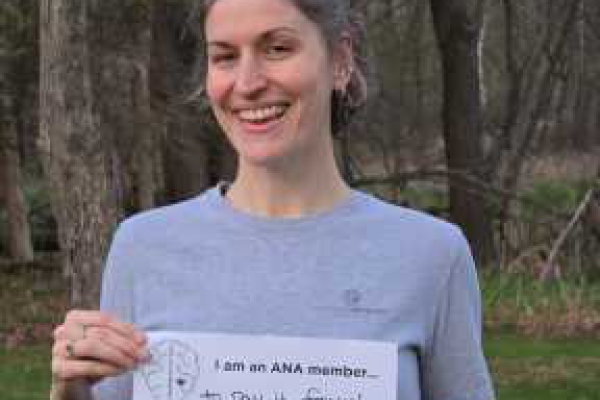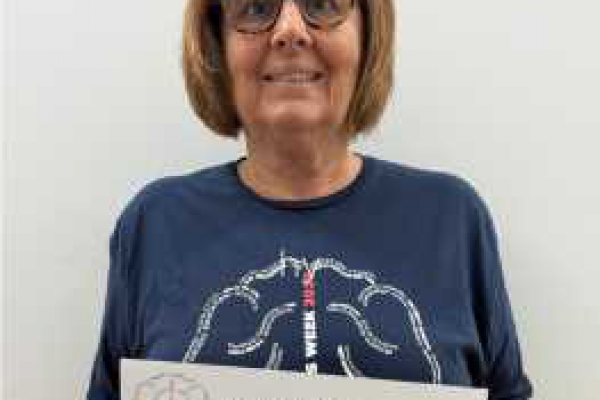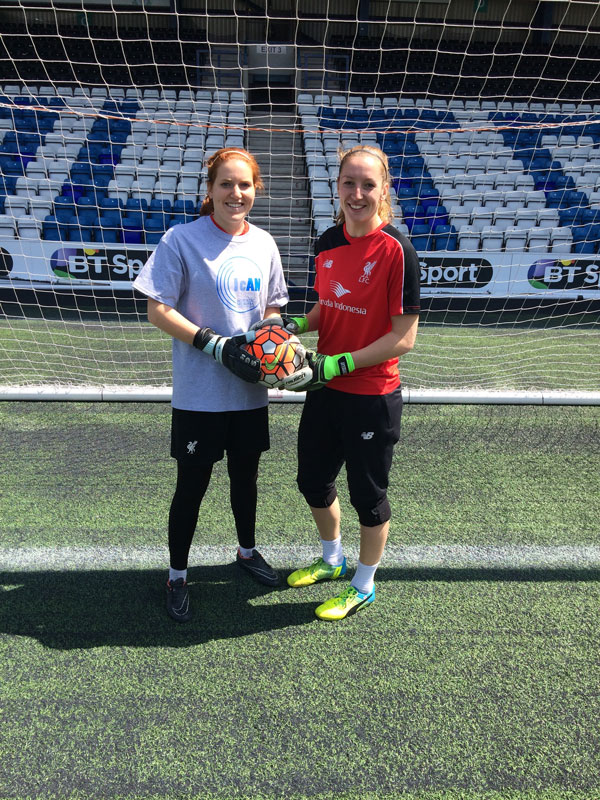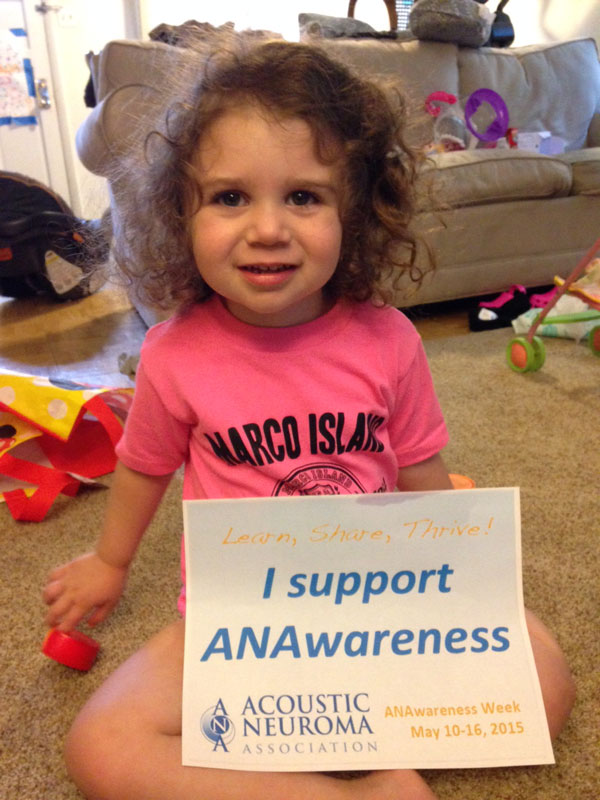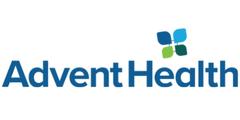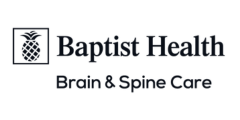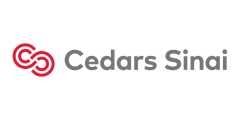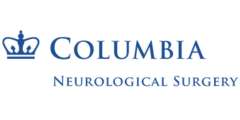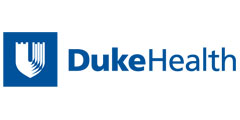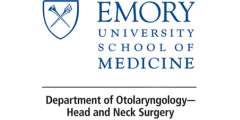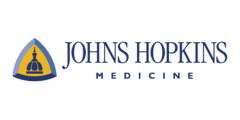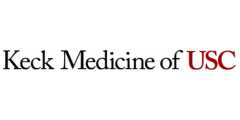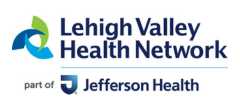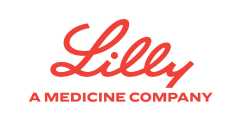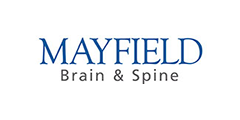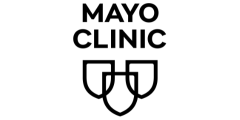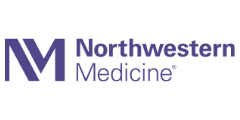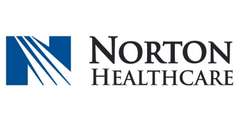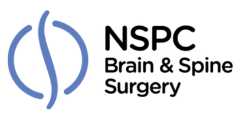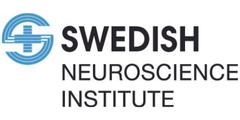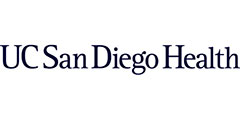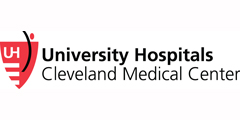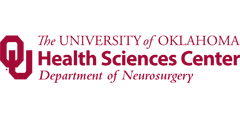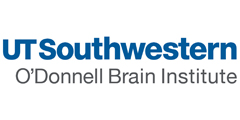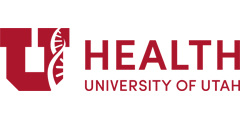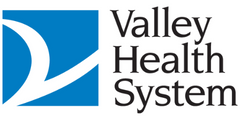- Details
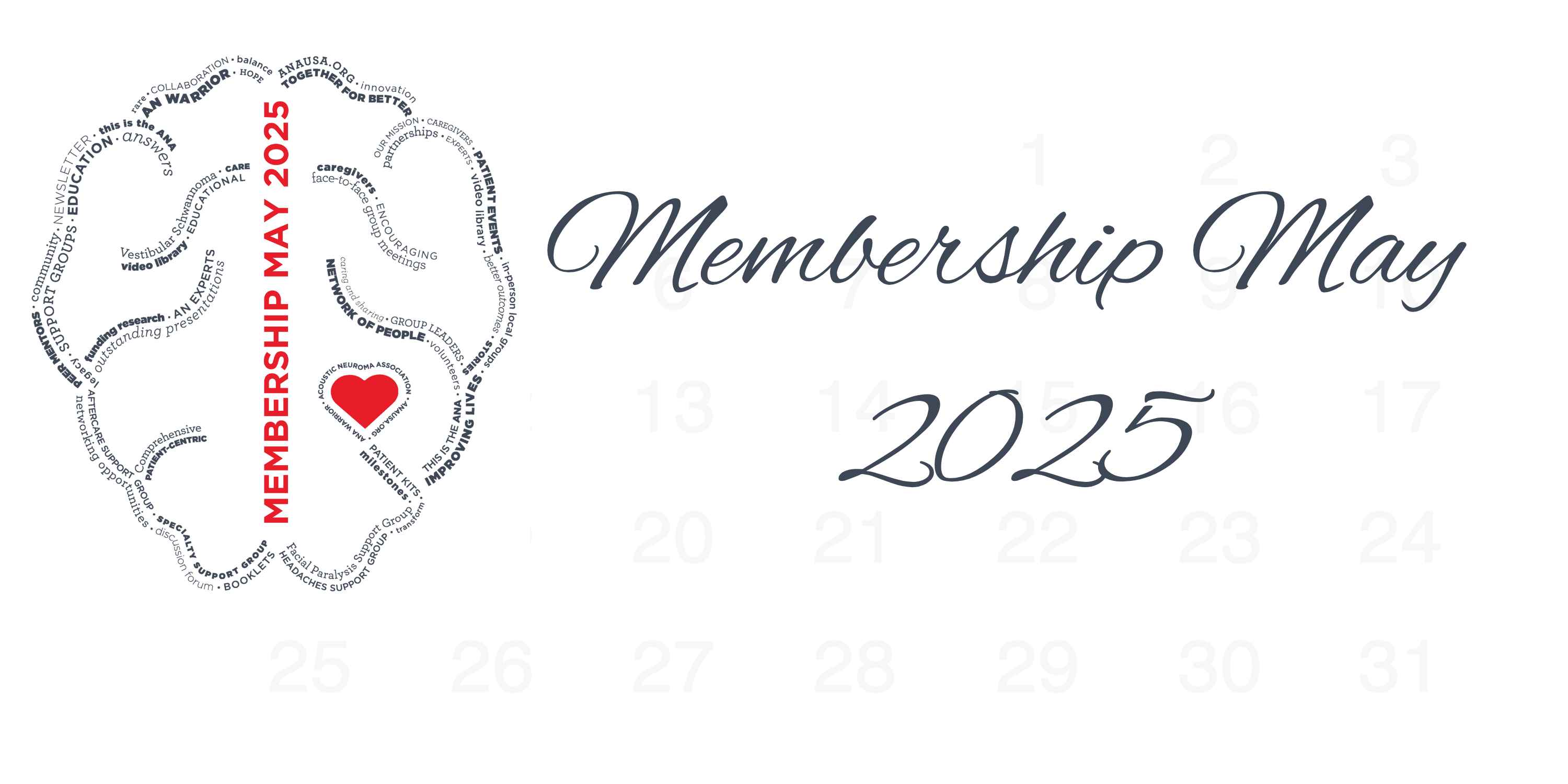
We are so grateful for our members! Whether they’ve recently joined us or have been part of our community for years, members play a significant role in helping the ANA continue as the premier resource for acoustic neuroma patients. Membership today helps patients in the days, weeks, months, and years to come.
For Brain Tumor Awareness Month, the ANA is providing an opportunity for everyone to experience a handful of the benefits usually reserved for our members. Throughout May, we’ll make available a selection of member resources, including webinars, Notes newsletter articles, our Q&A video library, informational booklets, and our peer mentor program.
Notes Newsletter:
Gene Therapy: A Potential Treatment Option for Vestibular Schwannoma (pdf)
Michael J. McKenna, M.D., and Kathleen Reape, M.D.
Akouos, Inc.
as printed in the March 2025 issue of Notes
Patient Story: Belonging Again (pdf)
KT Ryan
as printed in the June 2024 issue of Notes
share your story
Webinars:
Thursday, May 8th - 2 pm ET
Dr. Esther Vivas and Dr. Kelley Dwyer of Emory Healthcare will present:
Cochlear Implantation Post Acoustic Neuroma Resection
No need to register. This pre-recorded presentation will be released on the ANA Facebook page,
in the ANA video library, and in the ANA member webinar library.
Friday, May 30th - 10 am ET - New Day/Time
Dr. Ben Strickland and Dr. Peter Dixon of MUSC will present:
Maximizing Hearing Outcomes in Acoustic Neuroma Treatment: What Patients Should Know
Register to join us on Zoom
If you previously registered, you do not need to register again.
Q&A with Providers:
The Q&A Video Library is a member benefit and today we're sharing one of those videos with you all. Thank you to
over surgery, do I have a better chance of retaining my hearing?"
ANA Peer Mentor Program
Along with the benefits of membership, we’ll also be sharing why membership is important. Please take a moment to print, fill out the ‘Why I’m an ANA Member…’ prompt below, snap a picture, and send it to us through communications@anausa.org. We're excited to share these personal messages here and on our social media throughout the month.
If you have any questions about membership, please contact Matthew Balte, Membership Manager, at: matthewbalte@anausa.org.
- Details
Colonia High School Survey
The Acoustic Neuroma Association is working with acoustic neuroma patients to gather information related to their connection with Colonia High School. Your participation in this survey is greatly appreciated.
If you have been diagnosed with an acoustic neuroma, we have resources to help.
The Acoustic Neuroma Association (ANA) is the premier resource for the acoustic neuroma community, providing information, education, and support to persons diagnosed with acoustic neuromas (AN) and their care partners.
We understand how important it is to be informed about your acoustic neuroma diagnosis, treatment options, and ongoing care. The ANA extends a complimentary three-month membership to all patients, which includes a patient kit. This membership provides access to the Member Section of our website and includes our Peer Mentor Program, our extensive library of webinars, and our archive of NOTES, our quarterly newsletter.
Request our Free Patient Kit.
- Details
The Acoustic Neuroma Association is the premier resource to the acoustic neuroma community, informing, educating, and supporting those affected by an acoustic neuroma, also called a vestibular schwannoma.
We fulfill our mission every day through communication, innovation, research, and partnerships throughout the medical community to improve the lives of acoustic neuroma patients and their families.
- Details
ANA Peer Mentor Program
One-on-One Support
| First Name | Last Name | Phone | State | Size at Treatment | Treatment Type | Age at Treatment | Treatment Year | Additional Languages | Hearing Device | Issues | |
| * Martha | Emory | marthaemory@gmail.com | 205 427-4597 | AL | 1.2 cm | Surgery - Retrosig | 43 | 2023 | balance issues; vestibular therapy; headaches; occipital nerve block; fatigue; tinnitus; cognitive issues | ||
| Robin | Batra | rbatra854@gmail.com | 949 878-8801 | AZ | 1.2 cm | Radiation - Gamma Knife | 58 | 2013 | tinnitus; facial spasms | ||
| * Margaret | Briggs | glmrchk@gmail.com | 619 500-6141 | AZ | 1.6 cm | Surgery - Translab | 60 | 2015 | Siemens hearing aid; Bose Hearphones | facial rehab, fatigue, headaches, vestibular therapy, eye issues; eye drops | |
| * Carol | Franklin | lefsequeen53@gmail.com | 520 722-8340 | AZ | 2.5 cm | Surgery - Retrosig | 47 | 2001 | Phonak BTE | ||
| * Tricia | Jennings | azchipster@gmail.com | 520 825-9845 | AZ | 5 cm | Surgery - Retrosig | 48 | 2001 | Phonak CROS BTE bluetooth | CSF leak; eye closure issues; tear duct plugs; tinnitus; vestibular therapy; facial synkinesis | |
| * Vinit | Jagdish | vinitjagdish@gmail.com | 360 483-6889 | AZ | 2.8 mm | Surgery - Translab | 46 | 2021 | balance issues; dizziness; vestibular rehab; fatigue; headaches; tinnitus | ||
| Tracy | Schwimmer | marcschwim@aol.com | 602 561-1855 | AZ | 2.5 cm | Surgery - Retrosig | 2012 | tumor debulking; headaches; regrowth; facial weakness; facial numbness; facial rehab; CSF leak; CSF leak repair; VP shunt; dry eye | |||
| Tracy | Schwimmer | marcschwim@aol.com | 602 561-1855 | AZ | 2.5 cm | Surgery - Translab | 2015 | tumor debulking; headaches; regrowth; facial weakness; facial numbness; facial rehab; CSF leak; CSF leak repair; VP shunt; dry eye | |||
| Bob | Sterrett | rsterrett1@aol.com | 480 444-8409 | AZ | 1 cm | Observation | CA Nucleus 8 Cochlear Implant | tinnitus | |||
| * Kimberly | Ary | kimberly.ary3@gmail.com | 208-390-6361 | CA | 3.4 cm | Surgery - Translab | 22 | 2016 | CSF leak; shunt; headaches; fatigue; balance issues; blurry vision; double vision; titanium plate; regrowth | ||
| * Kimberly | Ary | kimberly.ary3@gmail.com | 208-390-6361 | CA | 3.4 cm | Radiation - LINAC | 29 | 2023 | CSF leak; shunt; headaches; fatigue; balance issues; blurry vision; double vision; titanium plate; regrowth | ||
| * Hazel | Berman | hazelannb@sbcglobal.net | 916 983-9313 | CA | 2.5 cm | Surgery - Translab | 36 | 1996 | Baha | 7/12 facial nerve graft; gold eye weight | |
| * Melissa | Diaz | missdiaz@me.com | 408 416 1145 | CA | 3 cm | Surgery - Translab | 33 | 2011 | Spanish | balance issues; vestibular therapy; synkinesis; facial neuromuscular rehab; Botox; facial paralysis; dry eye; fatigue post-surgery; depression; mental health therapy; taste issues | |
| Christina | Esfehani | esfehani@yahoo.com | 650 575-6990 | CA | 2.3 cm | Radiation - CyberKnife | 27 | 2004 | |||
| * Leah | Keith | leahkeith@me.com | CA | 2.5 cm | Surgery - Translab | 42 | 2011 | Oticon Ponto Pro | acupuncture for tinnitus | ||
| Mark | McLaren | greatscot@earthlink.net | 925 838-8175 | CA | 2 cm | Radiation - CyberKnife | 44 | 2001 | |||
| * Carol | Most Walker | crmost@icloud.com | 415 889-3547 | CA | .9 cm | Radiation - CyberKnife | 68 | 2021 | SSD; tinnitus | ||
| * Carol | Most Walker | crmost@icloud.com | 415 889-3547 | CA | .9 cm | Observation | 56 | SSD; tinnitus | |||
| Maggie | Shepard | mizmudpie@gmail.com | 530 859-1149 | CA | 11 mm | Surgery - Retrosig | 66 | 2022 | French | Phonak OTE | balance issues; vestibular therapy; oscillopsia; fatigue; tinnitus |
| Cody | Cooper | codyc.co@gmail.com | 720 403-1091 | CO | 3.4 cm | Surgery - Retrosig | 37 | 2016 | Baha | vestibular therapy; neuromuscular facial rehab; eye weight; eye weight removal; scleral lens; headaches | |
| Cody | Cooper | codyc.co@gmail.com | 720 403-1091 | CO | 3.4 cm | Surgery - Retrosig | 38 | 2016 | Baha | vestibular therapy; neuromuscular facial rehab; eye weight; eye weight removal; scleral lens; headaches | |
| * Virginia | Ferraro | ginnietennis@hotmail.com | 303 469-6391 | CO | .6 cm | Observation | 75 | Starkey Genesis Ai 24 RIC-R; Phonak Hearing Aid | tinnitus; balance issues | ||
| * Tara | Paul | tnpaul@comcast.net | 303-868-7181 | CO | 3 cm | Surgery - Translab | 42 | 2020 | BiCROS | regrowth; facial paralysis; facial rehab; gold weight; scleral lens; tarsorrhaphy; vestibular therapy; fatigue; swallowing issues; taste issues; tinnitus | |
| * Tara | Paul | tnpaul@comcast.net | 303-868-7181 | CO | 3 cm | Radiation - Gamma Knife | 42 | 2020 | BiCROS | regrowth; facial paralysis; facial rehab; gold weight; scleral lens; tarsorrhaphy; vestibular therapy; fatigue; swallowing issues; taste issues; tinnitus | |
| Samira | Rajabi | samirajabi@gmail.com | 303 547-0043 | CO | 3.5 cm | Surgery - Translab | 25 | 2012 | Farsi; French | regrowth; CSF leak; temporary shunts; eye issues; fatigue, headaches; tinnitus; taste issues; dental issues; chronic pain, SSD | |
| Samira | Rajabi | samirajabi@gmail.com | 303 547-0043 | CO | 3.5 cm | Surgery - Retrosig | 25 | 2012 | Farsi; French | regrowth; CSF leak; temporary shunts; eye issues; fatigue, headaches; tinnitus; taste issues; dental issues; chronic pain, SSD | |
| Bonnie | Bostrom | bobon611@aol.com | 860 214-3514 | CT | 1.7 cm | Radiation - Gamma Knife | 65 | 2012 | short-term headaches | ||
| * Stefanie | Batson-Martin | anamusicians@gmail.com | 407 493-7095 | FL | 4 cm | Surgery - Translab | 30 | 2019 | Oticon Ponto | tinnitus; headaches; facial twitching; fatigue; eye issues; balance issues | |
| * Stefanie | Batson-Martin | anamusicians@gmail.com | 407 493-7095 | FL | 4 cm | Radiation - Proton Beam | 31 | 2020 | Oticon Ponto | tinnitus; headaches; facial twitching; fatigue; eye issues; balance issues | |
| * Stefanie | Batson-Martin | anamusicians@gmail.com | 407 493-7095 | FL | 4 cm | Observation | 25 | 2014 | Oticon Ponto | tinnitus; headaches; facial twitching; fatigue; eye issues; balance issues | |
| Sherry | Cottrell | sjrmcottrell@gmail.com | 561 704-6733 | FL | 7 mm | Surgery - Translab | 51 | 2021 | Kanso 2 Cochlear Implant | balance issues; fatigue; headaches; taste/dental; tinnitus | |
| * Dyanne | Hughes | dylhughes55@gmail.com | 904 624-0940 | FL | 1.9 cm | Surgery - Translab | 53 | 2009 | BiCROS; Bose noise reducer headphones | facial neuromuscular rehab; synkinesis; Botox; eyelid surgery | |
| * Chad | Nye | chadnye@gmail.com | 407 496-8357 | FL | 1.5 cm | Surgery - Translab | 2011 | BiCROS; Bose noise reducer headphones | |||
| * Chad | Nye | chadnye@gmail.com | 407 496-8357 | FL | 1.5 cm | Radiation - CyberKnife | BiCROS; Bose noise reducer headphones | ||||
| Robert | Olivo | oedsall4@aol.com | 352 775-6858 | FL | 1.7 cm | Radiation - Gamma Knife | 70 | 2015 | Phonak Paradise 90 Hearing Aids bilateral | ||
| David | Puzzo | secgen11@gmail.com | 813 480-5679 | FL | 1.4 cm | Observation | Widex BiCROS | ||||
| * Agnes | Garino | algarino@sbcglobal.net | 314 610-9259 | GA | 1.5 cm | Surgery - Retrosig | 51 | 1996 | Phonak BiCROS | headaches; headache therapies | |
| * Meredith | Daly | meredith@meredithdaly.com | 678.525.1941 | GA | 3.6 cm | Surgery - Translab | 52 | 2012 | Phonak CROS | dry eye; balance issues; dizziness issues | |
| Jim | Henschel | jim.henschel@gmail.com | 770.840.5470 | GA | 2.5 cm | Surgery - Translab | 60 | 2021 | Phonak CROS | eye issues; eye weight; facial paralysis; facial nerve reanimation surgery | |
| Lisa | Trumbull | lisaannetrumbull@gmail.com | 808 253-9522 | HI | .13 cm | Surgery - Translab | 37 | 2017 | balance issues; double vision; taste changes | ||
| Laurie | Lichko | llichko@comcast.net | 630 390-4470 | IL | 2.9 cm | Surgery - Translab | 61 | 2021 | BiCROS | SSD; taste issues; tinnitus; balance issues | |
| Sheri | Settipani | sbwerner@comcast.net | 847 924-5929 | IL | 2 cm | Surgery - Retrosig | 48 | 2016 | facial issues; eye issues; maintained hearing | ||
| * David | Kellogg | david.m.kellogg@gmail.com | 913-568-5335 | IN | 2.4 cm | Surgery - Translab | 41 | 2003 | CROS | dry eye | |
| * Kathy | Gardner | kathyc0407@aol.com | 502 593-9224 | KY | 3.4 cm | Surgery - Translab | 55 | 2013 | Oticon BiCROS | 12/7 facial transfer; facelifts; browlift; gold weight; gold weight removal; punctal occlusion; vestibular rehab; NF2 | |
| * Kathy | Gardner | kathyc0407@aol.com | 502 593-9224 | KY | 3.4 cm | Radiation - Gamma Knife | 57 | 2015 | Oticon BiCROS | 12/7 facial transfer; facelifts; browlift; gold weight; gold weight removal; punctal occlusion; vestibular therapy; NF2 | |
| Deborah | Polson | decyrs@aol.com | 502 930-3106 | KY | 1.3 cm | Surgery - Retrosig | 59 | 2014 | headaches; head pain; neck pain; balance issues; vestibular therapy; tinnitus; titanium mesh; Botox for headaches | ||
| Tyler | Alt | tylerdalt@gmail.com | 913 787-3092 | KS | 3 cm | Surgery - Retrosig | 38 | 2021 | Cochlear Implant | balance issues; vestibular therapy; headaches; tinnitus | |
| Cathy | Beardslee | cbeardslee2@gmail.com | 305 439-2691 | MA | 3.4 cm | Family Member - Caregiver | 25 | 2023 | CROS | Headaches; CSF leak repair surgery; SSD; balance issues | |
| Phyllis | Pearl-Baxter | pbp214@yahoo.com | 781 258-3926 | MA | 1 cm | Radiation - CyberKnife | 44 | 2006 | Phonak | SSD; migraines; balance issues; tinnitus | |
| * Miranda | Sacharin | m.sacharin@gmail.com | 925 297-9435 | MA | 3.1 cm | Family Member - Caregiver | 52 | 2009 | facial retraining; eye weight; eye ptosis surgery; SSD; balance issues; cognitive issues | ||
| Heather | Homick | hhomick93@gmail.com | 240 508-4282 | MD | 3.7 cm | Surgery - Retrosig | 25 | 2018 | SSD; facial reanimation; free muscle transfer; Botox; facial retraining; dry eye; eyelid weight removed; balance issues; vestibular therapy | ||
| Leah | Jenks | leahgjenks@gmail.com | 708 954-7774 | MD | 2 cm | Surgery - Retrosig | 27 | 2022 | balance issues; vestibular therapy; tinnitus; SSD; dizziness | ||
| Bonny | Lally | bdaymusic@gmail.com | 410 660-1259 | MD | 2.9 cn | Surgery - Retrosig | 60 | 2017 | CROS | scleral lens; eyelid weight (removed); migraines; vestibular therapy; tinnitus; fatigue; headaches | |
| * Allison | Shaffer | akgshaffer@gmail.com | 301 706-7900 | MD | .9 cm | Surgery - Middle Fossa | 40 | 2010 | |||
| * Rick | May | rmay726@gmail.com | 734 812-8054 | MI | 2.5 cm | Surgery - Middle Fossa | 52 | 2011 | Phonak hearing aid | tinnitus; vestibular therapy; hearing preserved | |
| Kenneth | Posner | kennyposner@gmail.com | 248 464-0808 | MI | 1.5 cm | Surgery - Middle Fossa | 51 | 2009 | vestibular therapy; migraines; headache therapy, maintained hearing | ||
| Jill | Tolle | jilltolle@yahoo.com | 818 219-5857 | MI | 2.5 cm | Surgery - Translab | 41 | 2013 | vestibular therapy; tinnitus; CSF leak | ||
| Steven | Blons | bodysoul@earthlink.net | 612-386-3934 | MN | 9 mm | Observation | 2011 | Widex Hearing Aid | tinnitus | ||
| * Laura | Ferenci | lkferenci@gmail.com | 612 501-2248 | MN | 3 cm | Surgery - Translab | 57 | 2016 | balance issues; vestibular therapy; blurry vision; eye surgery; fatigue; tinnitus; taste issues | ||
| * Jay | Magrisso | jay.magrisso@gmail.com | 717 586-3275 | MN | 3 cm | Surgery - Retrosig | 39 | 2019 | Italian | SSD; brain fog; fatigue; balance/dizziness issues; headaches; eye issues | |
| Nancy | Rhein | nancyrhein@gmail.com | 612 240-0415 | MN | 2 cm | Surgery - Retrosig | 62 | 2016 | Phonak hearing aid | balance issues; dizziness; vestibular therapy; fatigue; headaches; taste issues | |
| * Robert | Fishbone | robert@robertfishbone.com | 314 324-4536 | MO | 1.8 cm | Radiation - Gamma Knife | 66 | 2017 | Resound hearing aid | Balance issues; fatigue; mild tinnitus; facial weakness | |
| * Carol | Gardner | carolhgardner@gmail.com | 573 690-3296 | MO | 3.1 cm | Surgery - Translab | 2020 | BiCROS | blephoplasty; titanium eyelid weight; facial therapy; Botox; TMJ | ||
| Susan | Plassmeyer | anaadventure2653@gmail.com | MO | 8 mm | Radiation - Gamma Knife | 53 | 2016 | Cochlear Americas Cochlear Implant | balance issues; vestibular therapy; fatigue; aural auditory rehab; sudden hearing loss post-treatment; tinnitus | ||
| * Stewart | Binder | marylandterp.888@gmail.com | 919 624-3256 | NC | 2.3 cm | Surgery - Translab | 59 | 2011 | Med-El Bonebridge | facial neuromuscular rehab; Botox; synkinesis; dry eye; platinum eye weight removal; scleral lens | |
| * Lisa | Fisher | lfisher@rubollc.com | 412 996-2386 | NC | 2.5 cm | Surgery - Translab | 33 | 2017 | Balance issues; CSF leak; fatigue; dry eye; eye closure issues; eye drops; eye patch; eye tape; facial rehab for synkinesis; Botox; regrowth; dry mouth; dental issues; prescription toothpaste | ||
| * Lisa | Fisher | lfisher@rubollc.com | 412 996-2386 | NC | 1.3 cm | Surgery - Translab | 39 | 2023 | Balance issues; CSF leak; fatigue; dry eye; eye closure issues; eye drops; eye patch; eye tape; facial rehab for synkinesis; Botox; regrowth; dry mouth; dental issues; prescription toothpaste | ||
| Kathy | Hill | kjayhill@gmail.com | 336 707-7013 | NC | .8 cm | Surgery - Middle Fossa | 52 | 2017 | Oticon Baha; Oticon More hearing aid | vestibular therapy; tinnitus; dry eye; facial paralysis | |
| Neil | Donnenfeld | ndonnenfeld@gmail.com | 617 285-0579 | NH | 1.4 cm | Radiation - Proton Beam | 50 | 2013 | tinnitus; hyperacusis; synkinesis | ||
| * Iryna | Mosendz | lutirinas@gmail.com | 609 705-6623 | NJ | 2.3 cm | Surgery - Middle Fossa | 28 | 2017 | Russian;Ukranian | dry eye; regrowth | |
| * Iryna | Mosendz | lutirinas@gmail.com | 609 705-6623 | NJ | 2.3 cm | Radiation - Proton Beam | 30 | 2019 | Russian;Ukranian | dry eye; regrowth | |
| Mary | Steed | maryellen.steed@gmail.com | 347 551-3486 | NJ | 5 cm | Family Member - Caregiver | 11 | 2021 | SSD; dry eye; headaches; facial weakness; speech therapy; occupational therapy; balance issues | ||
| Howard | Waldrop | howardrop@rocketmail.com | 201 818-8977 | NJ | 1 cm | Radiation - Gamma Knife | 50 | 2015 | Oticon | tinnitus; balance issues | |
| * Tracey | Collins | tracey.collins6273@gmail.com | 581 382-3283 | NY | 2.5 cm | Surgery - Retrosig | 35 | 2009 | |||
| Scott | Bornholdt | sbornholdt@zoomtown.com | 513 884-7442 | OH | 2.7 cm | Surgery - Retrosig | 52 | 2022 | Oticon | Fatigue; balance issues; vesibular therapy; tinnitus | |
| * Sandy | Hadgis | sjhadgis@gmail.com | 440 213-3577 | OH | 5 cm | Surgery - Retrosig | 38 | 2022 | Oticon Ponto | Double vision; stroke; dizziness; dry eye | |
| * Sandy | Hadgis | sjhadgis@gmail.com | 440 213-3577 | OH | 5 cm | Surgery - Translab | 38 | 2023 | Oticon Ponto | Double vision; stroke; dizziness; dry eye | |
| Erin | Heidrich | erinheidrich@gmail.com | 859 640-1083 | OH | 1.3 mm | Surgery - Middle Fossa | 39 | 2021 | Osia 2 | Balance issues; dizziness; vestibular therapy; cognitive behavioral therapy for tinnitus | |
| Kate | Roelker | kroelker@hotmail.com | 513 939-5920 | OH | 1.8 cm | Surgery - Middle Fossa | 65 | 2017 | Hearing aid | eye issues; tinnitus; facial therapy; vertigo; vestibular therapy; maintained hearing; tinnitus | |
| * Sara | Wasserman | artspeaks10@hotmail.com | 928 301-8781 | OH | 2.5 cm | Family Member - Caregiver | 64 | 2015 | SSD; balance issues; dizziness, fatigue | ||
| * Alice | Wedding | aj2mydad@yahoo.com | 513 315-2341 | OH | large | Surgery - Translab | 64 | 2012 | Baha | tinnitus; vestibular therapy | |
| David | Noyes | dcnoyes@comcast.net | 503 419-7418 | OR | 3.5cm | Surgery - Retrosig | 35 | 1999 | Spanish | Baha | facial rehab; facial surgery; vestibular therapy; eye weight |
| Robert | Bolen | rjbolen@verizon.net | 215 679-5945 | PA | 1.1 cm | Radiation - Gamma Knife | 76 | 2018 | SSD; tinnitus | ||
| * Marya | Camilleri | mc.ana.philly@gmail.com | 215 313-0727 | PA | 2.3 cm | Surgery - Retrosig | 42 | 2019 | balance issues; dizziness; vestibular therapy; headaches; facial weakness; dry eye; vision therapy; SSD | ||
| Patrick | Fink | pmfink@gmail.com | 412 480-2765 | PA | 2.1 cm | Radiation - Gamma Knife | 28 | 2017 | fatigue; tinnitus; headaches | ||
| * Nancy | Graffius | ngraffius@comcast.net | 610 939-9114 | PA | 4 cm | Surgery | 51 | 1994 | |||
| * Elizabeth | Kauermann | idesignepk@gmail.com | 215 357 6321 | PA | 3.2 cm | Surgery - Translab | 60 | 2021 | Hungarian | oscillopisa; vestibular therapy; tinnitus; cognitive/neurolgoical issues; fatigue; taste issues | |
| Robert | Vance | bob@vancerenz.com | 814 880-6084 | PA | 1 cm | Radiation - Varian Trilogy | 60 | 2013 | Signia BiCROS | vestibular therapy; tinnitus | |
| * Anthony | DiBella | ajd@orgtransitions.com | 401 523-9467 | RI | 1.7 cm; 3.1 cm | Avastin | 71 | 2019 | French; Italian; Spanish | Oticon OPN1 | NF2; tinnitus |
| * Anthony | DiBella | ajd@orgtransitions.com | 401 523-9467 | RI | 1.7 cm; 3.1 cm | Observation | 44 | 1992 | French; Italian; Spanish | Oticon OPN1 | NF2; tinnitus |
| Ricky | Roberson | rickynumber31@gmail.com | 803 729-4040 | SC | 3.5 cm | Surgery - Translab | 48 | 2017 | Phonak BiCROS | dizziness | |
| Lisa | Porisch | lisaporisch@gmail.com | 605 431-5827 | SD | 3 mm | Surgery - Middle Fossa | 46 | 2022 | Pre-treatment headaches; balance issues; vestibular therapy; tinnitus; maintained hearing; emotional cognitive issues | ||
| * Lauren | Vaden | tarheelbluesy@gmail.com | 615 232-4929 | TN | 1 cm | Surgery - Translab | 35 | 2019 | fatigue; SSD; hemi-facial spasms; facial sensitivity; tinnitus; balance issues | ||
| Linda | Dorasami | anausa.dfw@gmail.com | 817 244-0615 | TX | 1.6 cm | Surgery - Retrosig | 47 | 1995 | Spanish | vestibular rehab; headaches; pain management | |
| Linda | Dorasami | anausa.dfw@gmail.com | 817 244-0615 | TX | 3 cm | Observation | 66 | 2014 | Spanish | NF2 | |
| Katy | Fredericksen | katylf@yahoo.com | 832 585 6346 | TX | 4 cm | Surgery - Retrosig | 19 | 2019 | balance issues; vestibular therapy; pre-treatment headaches; occasional headaches; facial issues (short-term); dry eye; regrowth; NF2 | ||
| Katy | Fredericksen | katylf@yahoo.com | 832 585 6346 | TX | 4 cm | Surgery - FSR | 23 | 2023 | balance issues; vestibular therapy; pre-treatment headaches; occasional headaches; facial issues (short-term); dry eye; regrowth; NF2 | ||
| Laurie | Reid | lauriegailreid@outlook.com | 713 503-2788 | TX | 10 mm | Surgery - Middle Fossa | 53 | 2020 | hearing preserved; balance issues; vestibular prehab; hearing sensitivity; custom ear plugs; fatigue; tinnitus; dry eye | ||
| * Laura | Spence | lauraspencetx@gmail.com | 972 974-1516 | TX | 1.2 cm | Surgery - Middle Fossa | 41 | 2019 | Oticon Baha | facial Botox for synkinesis; DAO resection; vestibular therapy, severe dry eye; RX eye drops; Scleral lens; balance issues; headaches; fatigue | |
| * Johnny | Diaz | johnny.diaz@yahoo.com | 904 738-5063 | VA | 2.5 cm | Surgery - Middle Fossa | 39 | 2008 | Spanish | ||
| Mary Ann | Mugel | mamugel@gmail.com | 804 551-2928 | VA | 2.1 cm | Radiation - Gamma Knife | 65 | 2019 | hydrocephalus; permanent VP shunt; fatigue; tinnitus; diminished hearing; balance issues; dizziness; vestibular therapy | ||
| * Michelle | Nemeth | michelle.f.nemeth@gmail.com | 703 772-7114 | VA | 1.4 cm | Surgery - Middle Fossa | 27 | 2013 | maintained hearing | ||
| * DJ | Hilley | anapacificnw@gmail.com | 608 556-9228 | WA | 3.6 cm | Surgery - Retrosig | 42 | 2023 | German | facial rehab; facial botox; eye weight; tinnitus; balance issues; SSD | |
| Mary | Green | marygreen4810@gmail.com | 262 470-4810 | WI | 3.1 cm | Surgery - Retrosig | 50 | 2017 | CROS | vestibular therapy; speech therapy; synkinesis; facial rehab; Botox; eye issues; dry eye; headaches pre-treatment; hydrocephalus pre-treatment | |
| * Gaurav | Agrawal | ana.wisconsingroup@gmail.com | 414-399-3969 | WI | 1.5 cm | Radiation - Gamma Knife | 47 | 2024 | Hindi | vestibular therapy; fatigue; tinnitus; hyperacusis; facial spasms; SSD | |
| * Emily | Truell | anayoungadults@gmail.com | 920 229-5201 | WI | 3 cm | Surgery - Translab | 27 | 2015 | Oticon Ponto Plus | CSF leak; headaches; tinnitus; balance therapy |

